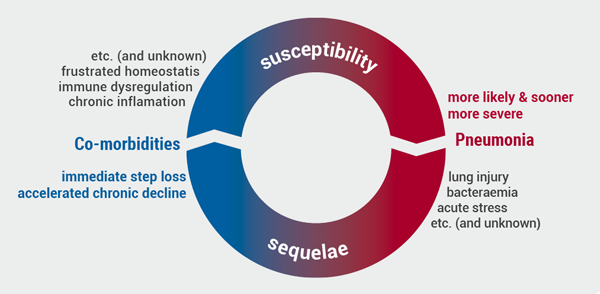https://doi.org/10.55788/4f524430
The rationale behind the study, Dr Felix Girrbach (University Hospital of Leipzig, Germany) explained, was that mechanical ventilation with individualised positive end-expiratory pressure (PEEPIND) in combination with continuous CPAP support in the initial hours following extubation is associated with better oxygenation compared with the use of PEEP alone [1].
In this study, 46 participants with a BMI of >35 kg/m2 who were scheduled to undergo bariatric laparoscopic abdominal surgery were ventilated with PEEPIND, which was defined as “the PEEP value with the lowest regional ventilation inhomogeneity as determined by electrical impedance tomography (EIT) during a standardised decremental PEEP-trial.”
The participants were randomised to a group that received CPAP (n=21) or a control group (n=25). Baseline characteristics were similar in both groups, with a mean age of 44 years of age and a mean BMI of 46.9 kg/m2. The participants in the CPAP arm received continuous CPAP support for 2 hours after extubation compared with standard supportive care for individuals in the control arm, including supplemental nasal oxygen insufflation to oxygen saturation (SpO2) level of ≥90%. Arterial oxygen partial pressure (PaO2)/fractional inspired oxygen (FiO2) ratio was measured 2 hours and 4 hours after extubation, respectively.
Dr Girrbach reported that there was no difference between the groups with regard to the median PEEPIND , which was roughly 18 cmH2O in both arms (P=0.76). However, although oxygenation (PaO2/FiO2 ratio) prior to extubation was comparable between the 2 arms (P=0.32), the PaO2/FiO2 ratio in the CPAP group was significantly higher during CPAP support (472 mmHg in the intervention arm vs 317 mmHg in the control arm; P<0.001).
Dr Girrbach suggested that despite post-extubation CPAP support in morbidly obese patients with normal lung function, the improvement in oxygenation did not persist after termination of CPAP support, potentially pointing to atelectasis formation.
- Girrbach F, et al. Post-extubation CPAP support and oxygenation in morbidly obese patients — a prospective randomized controlled trial. Session A63, ATS International Conference 2022, San Francisco, CA, USA, 13–18 May.
Copyright ©2022 Medicom Medical Publishers
Posted on
Previous Article
« ISAACC trial: CPAP controls blood pressure in ACS patients with severe OSA Next Article
Hydrocortisone does not help preterm infants »
« ISAACC trial: CPAP controls blood pressure in ACS patients with severe OSA Next Article
Hydrocortisone does not help preterm infants »
Table of Contents: ATS 2022
Featured articles
Letter from the Editor
COVID-19
Nebulised aviptadil “futile” in I-SPY COVID-19 trial
Lung transplantation after COVID-19-associated ARDS
Mesenchymal stem cells offer no benefit in COVID-19
Alpha-1 antitrypsin for ARDS secondary to severe COVID-19
Frailty prevalent 5 months following hospitalisation for COVID-19
Paediatric long COVID lacks definitions
Asthma Clinical Trial Updates
MANDALA and DENALI pattern success for albuterol-budesonide in asthma
ACOUSTICS data sounds good for adolescent asthma exacerbations
Type 2 asthma in children managed by dupilumab, despite atopic comorbidities
NAVIGATOR steers asthma patients to tezepelumab
High-intensity interval training slashes daily corticosteroids in asthma
Chronic Obstructive Pulmonary Disease
Three’s a crowd for triple therapy in COPD
Higher 1-year COPD mortality after hospitalisation for White patients
Reducing dyspnoea in chronic lung disease through weight loss
CT-evident mucus plugs in COPD associated with death
Home-based rehabilitation improves COPD: a randomised study
Highlighted Advances
Novel P2X3 antagonist can SOOTHE chronic cough
Colistimethate sodium PROMISing for non-cystic fibrosis bronchiectasis
Is avacopan better than prednisone for respiratory ANCA-associated vasculitis outcomes?
PAGANINI phase 2b data promising for eliapixant
POISE-3: Tranexamic acid for non-cardiac surgery
Obstructive sleep apnoea in most children with pulmonary hypertension
No screening evidence for COPD
Novel PDE4B inhibitor offers breakthrough for IPF
Hydrocortisone does not help preterm infants
CPAP temporarily supports pulmonary oxygenation in morbidly obese patients
ISAACC trial: CPAP controls blood pressure in ACS patients with severe OSA
© 2024 Medicom Medical Publishers. All rights reserved. Terms and Conditions | Privacy Policy


